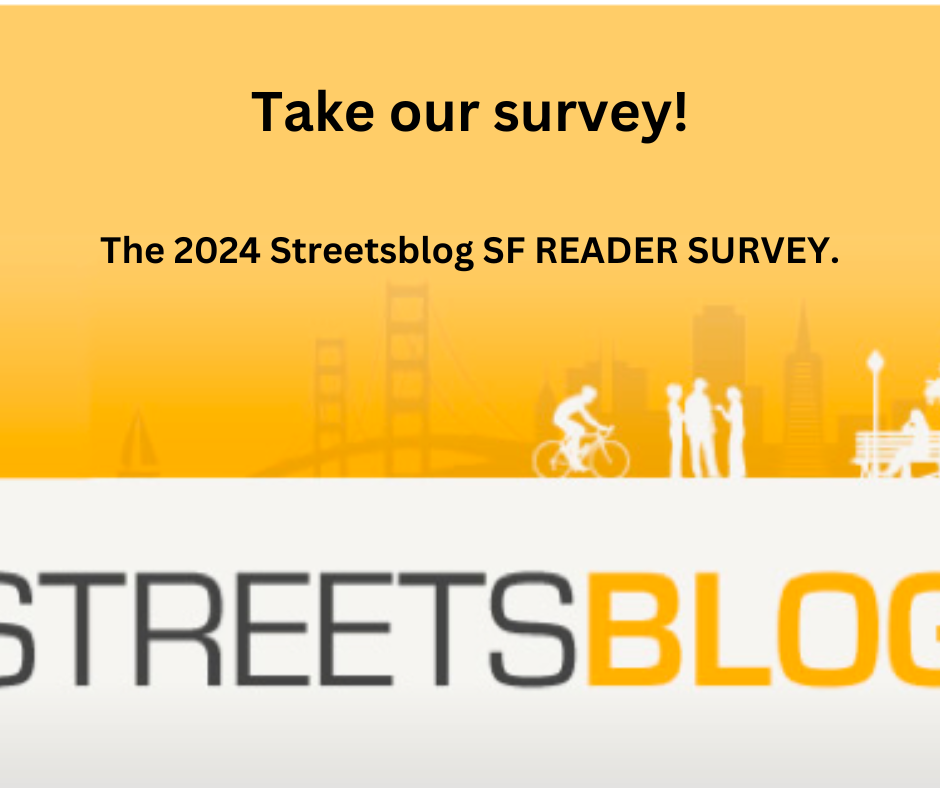SFPD and Health Department Announce Pedestrian Safety Campaign
11:18 AM PDT on October 22, 2009
 Photo: Thomas Hawk
Photo: Thomas HawkThe San Francisco Police Department (SFPD) and the Department of Public Health (DPH) recently announced a pedestrian safety program funded by a grant from the California Office of Traffic Safety (OTS, tag: "Toward Zero Deaths, Every 1 Counts"), a joint initiative that aims to increase enforcement of dangerous and illegal driver behavior, coupled with education campaigns to seniors and other vulnerable pedestrians.
The SFPD and DPH will share the grant worth $302,189. SFPD will focus its enforcement on the following citations at or near intersections with disproportionate collisions involving pedestrians:
- Motorists violating pedestrian right-of-way
- Violations by pedestrians
- Vehicles violating the posted speed limits
- Right turn violations at intersections
- Red light violations
Ana Validzic of the DPH said the grant will be used to improve their comprehensive pedestrian injury maps [PDF], to update their pedestrian safety material, and to provide four mini-grants to advocacy groups that have been involved in pedestrian safety campaigns. She said previous recipients of DPH grants were Walk SF, Senior Action Network, and Lighthouse for the Blind and Visually Impaired.
Validzic was upbeat about sharing the grant with SFPD and said it was an encouraging sign that OTS would give the money this way. "This funding from OTS represents a dramatic shift for them. In the
past 8 years, they have been interested in other traffic safety
initiatives and now they are really focused on pedestrian safety
initiatives like Safe Routes to School."
OTS grants would typically be for two years, according to Validzic, but because of the uncertainty around re-authorization of the federal Transportation Equity Act (TEA), this year's grant is only for one year. Waiting on the federal scramble around TEA's re-authorization or further extension means DPH and SFPD won't know how consistently they can rely on OTS funding for pedestrian programs like this one.
At least it's something, noted Walk SF Executive Director Manish Champsee, who was also excited by the joint grant.
"At one time pedestrian education was educating pedestrians to get the hell out of the way," offered Champsee, who pointed to the data showing two-thirds of injury collisions involving pedestrians in San Francisco are due to driver fault. He conceded, however, that money spent on eduction is not wasted, assuming it goes hand in hand with increased enforcement. "Maybe the ideal thing is that people shouldn't behave like maniacs. But there is probably something to say for educating the most vulnerable populations, say, 'you need to pay attention to the fact that a lot of drivers don't follow the rules.'"
According to police statistics, pedestrian fatalities over the past five years have been the fault of pedestrians and the fault of motorists violating pedestrian right-of-way at roughly the equivalent proportion, although Champsee noted that those two violations don't add up to the total. Given the ratio of fault in injury collisions generally, he assumed the other fatalities were due to other driver behavior, such as speeding or running red lights.
- 2009 13 pedestrian fatalities. Out of the 13 fatalities, primary collision factors were violations of pedestrian right-of-way (4) and violations on the part of the pedestrian (4)
- 2008 13 pedestrian fatalities. Out of the 13 fatalities, primary collision factors were violations of pedestrian right-of-way (5) and violations on the part of the pedestrian (5)
- 2007 24 pedestrian fatalities. Out of the 24 fatalities, primary collision factors were violations of pedestrian right-of-way (7) and violations on the part of the pedestrian (7)
- 2006 16 pedestrian fatalities. Out of the 16 fatalities, primary collision factors were violations of pedestrian right of way (5) and violations on the part of the pedestrian (6)
- 2005 14 pedestrian fatalities. Out of the 14 fatalities, primary collision factors were violations of pedestrian right-of- way (5) and violations on the part of the pedestrian (6)
Stay in touch
Sign up for our free newsletter



